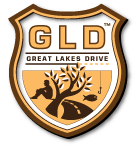Niagara – Rafting Tug 1872 – 1904 (SHIPWRECK)
Niagara – Rafting Tug 1872 – 1904 (SHIPWRECK)
knife river MN
The Niagara was built in 1872 as Hull No. 21 by the Detroit Dry Dock Company in Detroit, Mich. The Niagara was an early example of a class of large “outside” (outside the harbor) tugs intended for use on the open lakes. Built of wood, theNiagara was 130 feet in length, with a beam of 24 feet 7 inches and drew 8 feet 7 inches. At the time of launching, it was rated at 276 gross tons displacement and 183 net tons displacement. The Niagara was powered by a high-pressure engine with a single cylinder 27 inches in diameter with a 33 inch stroke. Steam was produced by two fire box boilers which were 5 1/2 feet in diameter and 171 inches in length.
Heavy Seas
The Niagara was lost on Saturday evening, June 4, 1904, at Knife Island, Minn. On that day, the Niagara was headed to Duluth from Sault Ste. Marie to tow the marine construction equipment of Hugo & Tims to Lake Huron. It was steaming in heavy seas and poor weather when it ran up on the island. Apparently, the compass was malfunctioning due to the magnetic attraction of the shoreline and the Niagara was in the breakers along the shore before the island was even seen. The engine was quickly reversed but the Niagara was driven onto the rocks by the trailing seas and wind. It was pounded heavily by the waves and soon began to break up. The Niagara’s distress signals were heard in a village at the mouth of the Knife River and the telegraph operator there telegraphed Two Harbors, Minn., for help. The tug Edna G. was dispatched and quickly arrived at Knife Island. The eleven crewmen and two passengers aboard the Niagara were rescued just before it began to break apart. The only injury was to Mrs. A. Merritt who cut her hand on broken glass while escaping from her cabin.
Niagara Detailed Information
MN historical Society Shipwreck Map
All Content the property of MN Historical Society and Sources. Photo the property of Institute for Great Lakes Research, Bowling Green State Univeristy.


